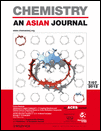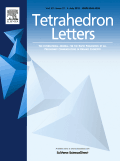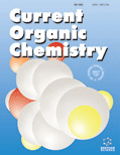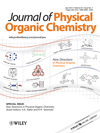
EUROPEAN JOURNAL OF ORGANIC CHEMISTRY
Scope & Guideline
Empowering Discovery in Organic Science
Introduction
Aims and Scopes
- Synthetic Methodologies:
The journal emphasizes the development of new synthetic methodologies, including innovative approaches for constructing complex organic molecules, utilizing various catalytic systems, and exploring new reaction conditions. - Catalysis:
A significant focus is placed on the study of catalytic processes, particularly transition metal catalysis and organocatalysis, aimed at enhancing the efficiency and selectivity of organic transformations. - Mechanistic Insights:
Research articles often delve into the mechanistic aspects of reactions, providing detailed analyses that contribute to a deeper understanding of organic reaction pathways. - Functional Materials:
The journal also covers the synthesis and characterization of functional organic materials, including polymers, dyes, and materials for energy applications, highlighting their potential uses in technology and industry. - Biological Applications:
Papers exploring the synthesis of biologically active compounds, including pharmaceuticals and agrochemicals, are prevalent, showcasing the journal's commitment to advancing medicinal chemistry. - Environmental Chemistry:
There is a growing interest in sustainable practices and green chemistry, with articles focusing on eco-friendly synthesis methods and the valorization of waste materials.
Trending and Emerging
- Photocatalysis:
There is a notable increase in research related to photocatalytic reactions, particularly those utilizing visible light to facilitate organic transformations, indicating a trend towards more sustainable and energy-efficient synthesis. - Sustainable Chemistry:
Research articles focusing on green chemistry principles and environmentally friendly synthesis methods are on the rise, reflecting a broader commitment within the scientific community to sustainability and reducing environmental impact. - Radical Chemistry:
The exploration of radical reactions, including radical polymerizations and radical-mediated transformations, has gained prominence, showcasing new methodologies that leverage radical intermediates for efficient synthesis. - Bioconjugation and Bioorthogonal Chemistry:
Emerging research in bioconjugation techniques and bioorthogonal reactions highlights the intersection of organic chemistry with biological applications, particularly in drug development and targeted therapies. - Machine Learning in Organic Synthesis:
The integration of computational methods and machine learning in the design and optimization of organic reactions is gaining traction, signifying a trend towards data-driven approaches in organic synthesis.
Declining or Waning
- Traditional Organic Synthesis:
Classic organic synthesis methods, while still relevant, have seen a decrease in focus as researchers increasingly explore more innovative and efficient methodologies that align with sustainable practices. - Conventional Reaction Mechanisms:
Research centered on well-established reaction mechanisms has waned, as there is a growing emphasis on novel pathways and mechanistic insights that challenge traditional views. - Inorganic and Organometallic Chemistry:
Although still a component of organic chemistry, the specific focus on inorganic and organometallic synthesis within organic contexts has diminished, possibly due to the rise of interdisciplinary research involving broader chemical fields.
Similar Journals

Chemistry-An Asian Journal
Advancing Knowledge Through Innovative Discoveries.Chemistry-An Asian Journal is a premier academic publication in the field of chemistry, published by WILEY-V C H VERLAG GMBH in the United Kingdom. With an impressive track record since its inception in 2006, this journal has established itself as a leading platform for high-quality research, effectively bridging the gap between fundamental and applied chemistry. The journal is currently ranked in the Q2 category for Biochemistry and Q1 in both Chemistry (miscellaneous) and Organic Chemistry as of 2023, reflecting its significant impact and relevance in the scientific community. According to Scopus metrics, it stands at a commendable rank of #92 out of 408 in General Chemistry, showcasing its influence and reach among researchers. Although not an open-access journal, it offers a wealth of subscription options, allowing access to cutting-edge research articles and reviews that cater to both seasoned professionals and new entrants to the field. By publishing innovative findings and fostering discussions on contemporary issues in chemistry, Chemistry-An Asian Journal remains a vital resource for advancing knowledge and facilitating collaboration among scientists globally.

ORGANIC SYNTHESES
Unveiling Innovations in Organic ChemistryORGANIC SYNTHESES is a prestigious journal dedicated to the field of organic chemistry, published by ORGANIC SYNTHESES INC. Since its inception in 1946, the journal has served as a vital platform for researchers, educators, and practitioners in chemistry, showcasing significant findings and methodologies that advance the discipline. Although it currently does not offer open access, it is recognized for its rigorous peer-review process and its contribution to standardizing organic synthesis methods. With an ISSN of 0078-6209 and an E-ISSN of 2333-3553, the journal's impact reflects its quality, with a current Scopus ranking placing it in the fourth quartile in both Organic Chemistry and Physical and Theoretical Chemistry. This positioning underscores its critical role in fostering knowledge and innovation within these fields. Researchers and students alike will find ORGANIC SYNTHESES an essential resource for staying informed on contemporary practices and discoveries in organic synthesis.

ARKIVOC
Pioneering Discoveries in Organic Chemistry for a Brighter FutureARKIVOC is an esteemed open-access journal dedicated to the field of Organic Chemistry, published by ARKAT USA INC. Since its inception in 2000, ARKIVOC has aimed to disseminate high-quality research and advancements in organic chemistry, fostering an international exchange of knowledge within this ever-evolving discipline. With its ISSN 1551-7004 and E-ISSN 1551-7012, the journal is committed to providing accessible content free of charge to researchers, students, and professionals around the globe. Although currently categorized in the fourth quartile of Organic Chemistry with a Scopus rank of #188 out of 211, ARKIVOC continues to encourage the publication of innovative works and critical reviews that highlight emerging trends and methodologies in organic synthesis, reaction mechanisms, and material sciences. Its open-access model since 2000 ensures that valuable contributions to scientific knowledge are widely available, promoting collaboration and discovery. The journal is based in the United States, with its editorial office located at the University of Florida, under the guidance of prominent chemists. ARKIVOC provides an essential platform for those deeply engaged in organic chemistry research, supporting the advancement of science for future generations.

RUSSIAN CHEMICAL BULLETIN
Connecting Researchers through Pioneering Chemical Insights.RUSSIAN CHEMICAL BULLETIN, published by SPRINGER, serves as a pivotal resource in the field of general chemistry, covering a wide array of topics that impact both theoretical and applied chemistry. With an ISSN of 1066-5285 and a presence since 1993, this journal provides a platform for disseminating significant research findings, practical applications, and novel methodologies within the broader chemistry community. While it currently holds a Q3 ranking in the Chemistry (miscellaneous) category and occupies the 230th position out of 408 in the Scopus rankings, its reputation continues to grow, fostering collaboration and innovation among researchers and professionals alike. Although the journal does not offer an open-access model, it is committed to making findings accessible within the academic community, ensuring that valuable insights can inform future research. With an anticipated convergence of studies extending to 2024, the RUSSIAN CHEMICAL BULLETIN remains an essential reference for those dedicated to advancing chemical science.

TETRAHEDRON LETTERS
Innovative Insights in Biochemistry and Organic ChemistryTETRAHEDRON LETTERS, published by Pergamon-Elsevier Science Ltd, is a leading journal in the fields of Biochemistry, Drug Discovery, and Organic Chemistry, with a rich legacy since its inception in 1959. This prestigious journal serves as a vital resource for researchers and professionals dedicated to advancing the understanding of chemical sciences, featuring high-impact research that influences both academic and practical applications. Although it is currently classified in the third quartile across its categories for 2023, its rigorous peer-review process ensures the publication of quality research that contributes to the scientific community. With an ISSN of 0040-4039 and an E-ISSN of 1873-3581, TETRAHEDRON LETTERS is easily accessible for those in the academic landscape seeking to stay abreast of innovative developments. Researchers, professionals, and students alike will find invaluable insights and collaborative opportunities within the pages of TETRAHEDRON LETTERS, making it an essential read for anyone involved in the chemical sciences.

CURRENT ORGANIC CHEMISTRY
Innovating Insights in Organic Chemistry ResearchCURRENT ORGANIC CHEMISTRY, published by Bentham Science Publishers, stands as a pivotal platform in the field of organic chemistry, providing innovative insights and advancements since its inception in 1997. With an ISSN of 1385-2728 and an E-ISSN of 1875-5348, this esteemed journal has carved a niche in the academic landscape, currently ranking in the Q3 category for Organic Chemistry according to the 2023 metrics. Operating from the United Arab Emirates, it engages a diverse audience of researchers, professionals, and students by delivering quality peer-reviewed articles that cover a broad spectrum of organic chemistry research. Although the journal does not offer open access, it remains a respected source of knowledge, indexed in Scopus with a percentile ranking of 43, encouraging rigorous discourse and the dissemination of cutting-edge findings. With continuous publication through 2024, CURRENT ORGANIC CHEMISTRY is dedicated to advancing the frontiers of organic chemistry research and technology.

Frontiers in Chemistry
Empowering Global Collaboration in Chemical Research.Frontiers in Chemistry is an esteemed and innovative Open Access journal published by FRONTIERS MEDIA SA, based in Lausanne, Switzerland. Since its inception in 2013, the journal has established itself as a leading platform for the dissemination of high-quality research across a broad spectrum of chemistry disciplines, achieving a notable Q1 classification in the miscellaneous chemistry category as of 2023. With an impressive Scopus rank, placing it at 72nd out of 408 in General Chemistry and falling within the 82nd percentile, Frontiers in Chemistry is committed to publishing significant findings that contribute to the advancement of the field. The journal's Open Access model ensures that research is freely accessible to all, fostering a greater exchange of knowledge and collaboration among researchers, professionals, and students globally. It covers a range of topics, from organic and inorganic chemistry to materials science and biochemistry, making it an essential resource for anyone seeking to stay at the forefront of chemical research.

CHINESE JOURNAL OF CHEMISTRY
Connecting global minds in chemistry.The CHINESE JOURNAL OF CHEMISTRY, published by WILEY-V C H VERLAG GMBH, is a distinguished peer-reviewed journal that has been contributing to the field of chemistry since its inception in 1990. With an impressive Q1 ranking in the Chemistry (miscellaneous) category and a Scopus rank of 67 out of 408, this journal is recognized for its rigorous scholarly standards and significant impact within the academic community. Renowned for publishing high-quality research, reviews, and insightful commentaries, the journal serves as a vital resource for researchers, professionals, and students keen on advancing their understanding of general chemistry and its applications. Although it does not offer open access, the journal remains an essential outlet for innovative chemistry research, attracting contributions from a global network of specialists. With its broad scope covering various aspects of chemistry and a commitment to fostering scientific dialogue, the CHINESE JOURNAL OF CHEMISTRY is poised to continue its role as a central pillar in the ever-evolving landscape of chemical sciences.

HELVETICA CHIMICA ACTA
Catalyzing Knowledge Across Chemical DisciplinesHELVETICA CHIMICA ACTA, published by WILEY-V C H VERLAG GMBH, stands as a pivotal journal in the fields of chemistry and chemical research. Established in 1918, this esteemed journal spans a diverse array of topics, including biochemistry, catalysis, drug discovery, inorganic and organic chemistry, as well as physical and theoretical chemistry. With influence reflected in its noteworthy Q2 and Q3 quartile rankings across these categories as of 2023, HELVETICA CHIMICA ACTA continues to capture the interest of the global scientific community. Although not an open-access journal, it remains accessible through various academic institutions, ensuring broad reach and collaboration opportunities. Researchers, professionals, and students alike will find its meticulously peer-reviewed articles critical for advancing knowledge and fostering innovation within the chemical sciences. As the journal converges toward 2024, it remains committed to publishing high-quality, impactful research that supports the evolution of chemistry across its multifaceted disciplines.

JOURNAL OF PHYSICAL ORGANIC CHEMISTRY
Unveiling the principles behind organic processes.JOURNAL OF PHYSICAL ORGANIC CHEMISTRY, published by Wiley, serves as a vital platform for researchers and professionals in the fields of organic and physical theoretical chemistry. With a rich history of publication dating back to 1988 and continuing through 2024, this esteemed journal aims to advance the understanding of the physical principles underlying organic reactions and processes. Although it operates without an open access model, the journal maintains a respectable impact factor and has achieved Q3 rankings in both Organic Chemistry and Physical and Theoretical Chemistry as of 2023, affirming its relevance within the scientific community. Researchers looking to publish innovative studies will find a competitive space given its Scopus rankings—placed at #105 in Physical and Theoretical Chemistry and #123 in Organic Chemistry. The journal not only curates high-quality research but also encourages collaboration and the exchange of ideas, making it a cornerstone for anyone dedicated to exploring the complexities of organic materials and their physical interactions.